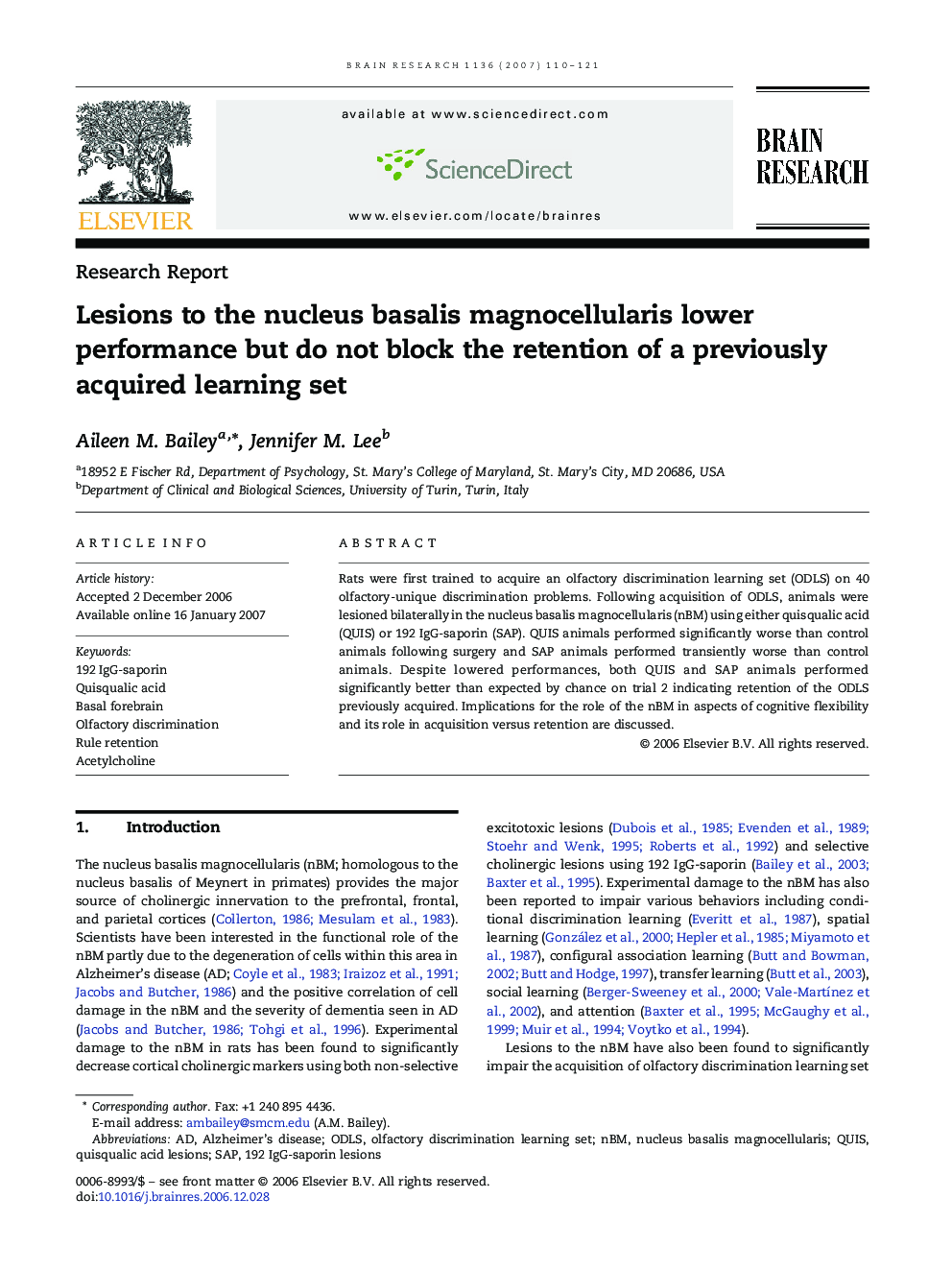| Article ID | Journal | Published Year | Pages | File Type |
|---|---|---|---|---|
| 4331531 | Brain Research | 2007 | 12 Pages |
Rats were first trained to acquire an olfactory discrimination learning set (ODLS) on 40 olfactory-unique discrimination problems. Following acquisition of ODLS, animals were lesioned bilaterally in the nucleus basalis magnocellularis (nBM) using either quisqualic acid (QUIS) or 192 IgG-saporin (SAP). QUIS animals performed significantly worse than control animals following surgery and SAP animals performed transiently worse than control animals. Despite lowered performances, both QUIS and SAP animals performed significantly better than expected by chance on trial 2 indicating retention of the ODLS previously acquired. Implications for the role of the nBM in aspects of cognitive flexibility and its role in acquisition versus retention are discussed.
